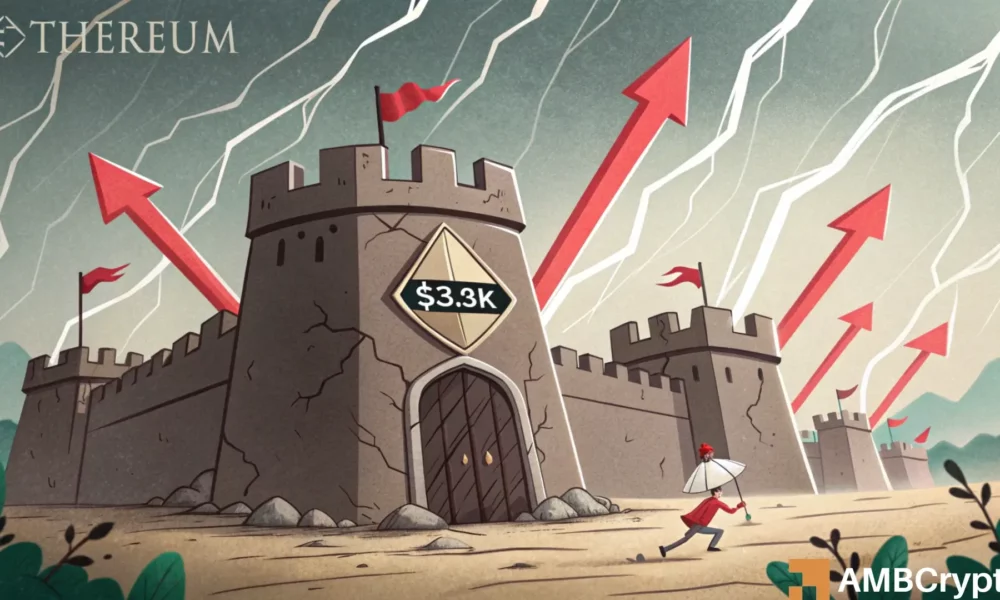An inverse head and shoulder pattern has emerged on the 2-week chart for Ethereum (ETH), indicating strong bullish potential on higher timeframes. A successful breakout from this pattern could propel the price of Ethereum to $12,000.
Despite this optimistic long-term outlook, the sentiment is overwhelmingly bearish on the daily and lower timeframes. The recent price action saw Ethereum dropping below the crucial $3.4k support level, signaling a bearish trend with potential for further downside.
Negative Trend Formation and Support Erosion
The breach of the $3,509 mark on December 19th marked a significant shift towards a bearish market sentiment on the daily charts. This was exacerbated by the Relative Strength Index (RSI) dropping below the neutral 50 level, confirming the negative bias. Additionally, the On-Balance Volume (OBV) has shown a lack of significant upwards momentum in the past two months.
These signals point towards a high probability of further losses in the near term. The once-supportive zone around $3.4k has now turned into a formidable resistance, while the OBV’s lack of strong movement indicates a lack of buying interest.
Between November 14th and December 19th, Ethereum’s price struggled to break above the $4k resistance level, facing multiple rejections and subsequently retreating towards $3.3k. This pattern suggests a prevailing bearish trend with a notable absence of buying support.
Crucial Levels to Watch on the 4-Hour Chart
Key support and resistance levels, marked in white, stand at $3,555 and $3,101, shaping the immediate price action for Ethereum traders. These levels will dictate whether the price maintains its current trajectory or sees a reversal.
On the lower timeframes, the $3,314 support holds significance and could potentially trigger a modest 3.4% to 5.8% price rebound. However, a sustainable shift to a bullish bias on the daily chart would require a notable increase in buying activity, which has been notably absent in recent weeks.
Disclaimer: The opinions expressed in this article are not meant to be construed as financial advice. Always conduct your research before making any investment decisions.

